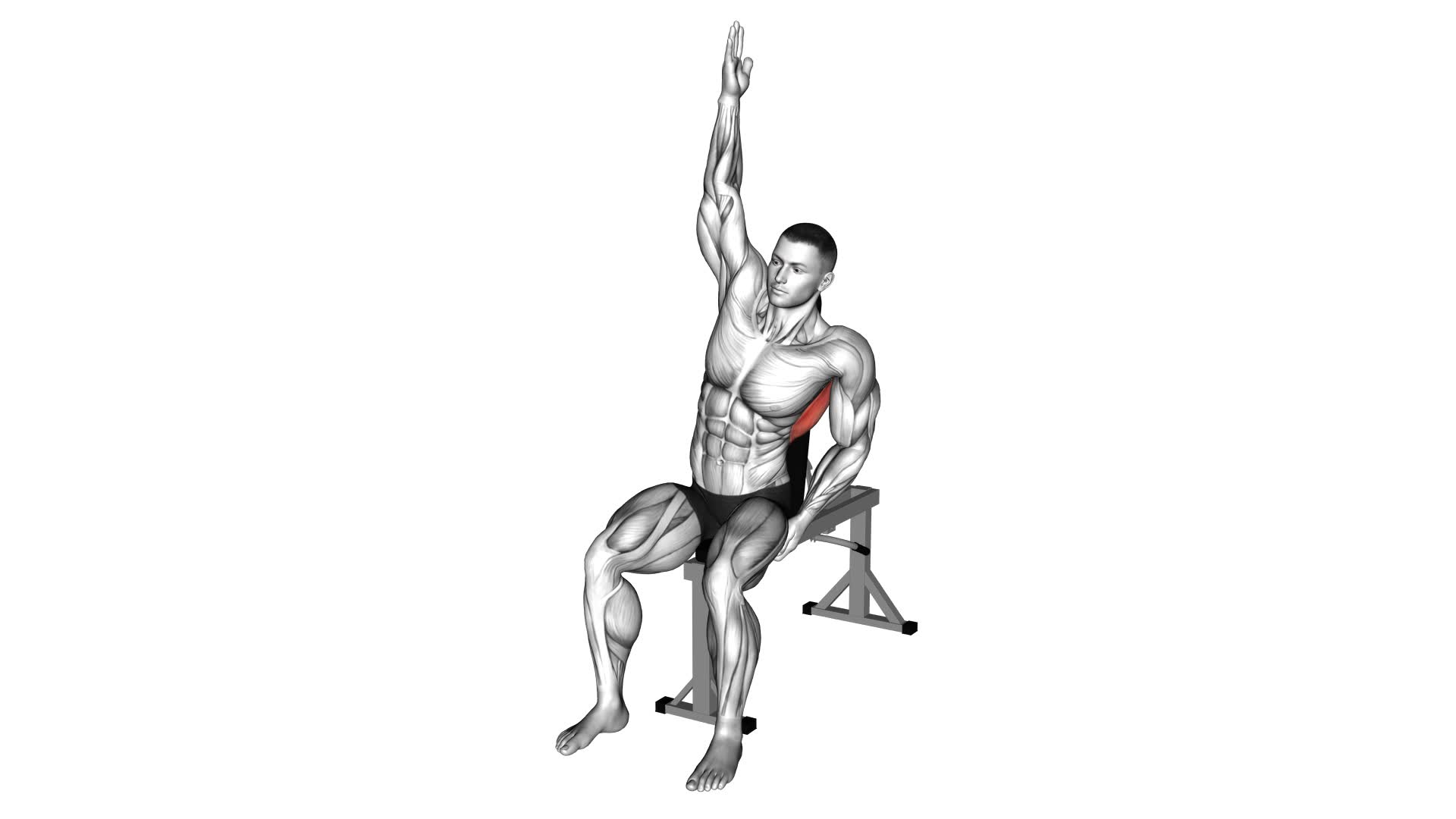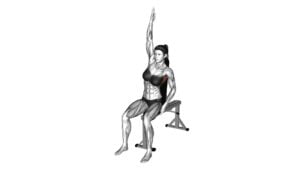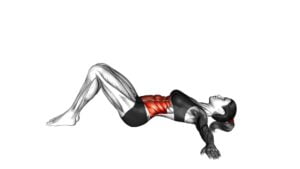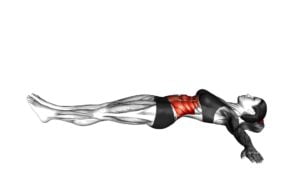Seated Lower Back Stretch – Video Exercise Guide & Tips

Are you looking for an effective way to stretch your lower back? Look no further!
Watch This Exercise Video
In this video exercise guide, we will show you how to perform the seated lower back stretch. With just a few simple steps, you can relieve tension and improve flexibility in your lower back.
Don't let back pain hold you back from reaching your fitness goals. Follow our tips and watch the video guide to get started today.
Key Takeaways
- Increased flexibility in the lower back
- Alleviation of stiffness and improved range of motion
- Improved posture and alignment of the spine
- Tension relief and reduced risk of injury
Benefits of the Seated Lower Back Stretch
You will experience numerous benefits from incorporating the seated lower back stretch into your exercise routine. One of the main benefits of flexibility is that it allows you to move more freely and with greater ease. By regularly stretching your lower back, you can increase the flexibility of this area, which can help alleviate stiffness and improve your overall range of motion.
Another benefit of the seated lower back stretch is its ability to improve posture. Poor posture can lead to a variety of issues, including back pain and muscle imbalances. By stretching your lower back, you can help to counteract these problems and promote better alignment of the spine.
In addition to these benefits, the seated lower back stretch also helps to relieve tension and reduce the risk of injury. When done correctly, this stretch can target the muscles in your lower back and help to release any tightness or discomfort. This can be especially beneficial if you spend a lot of time sitting or engaging in activities that put strain on the lower back.
To maximize the benefits of the seated lower back stretch, it's important to use proper stretching technique. This means maintaining good form, breathing deeply, and avoiding any jerky or sudden movements. By following these guidelines, you can ensure that you're getting the most out of this stretch and protecting yourself from potential injury.
Equipment Needed for the Exercise
To properly perform the seated lower back stretch, there are a few essential pieces of equipment that you'll need.
First, you'll need a sturdy chair or bench to sit on.
Additionally, you may want to have a yoga mat or towel to provide cushioning and support for your back.
Essential Equipment for Stretch
To properly perform the seated lower back stretch exercise, you'll need a yoga mat. This essential piece of equipment provides a comfortable and stable surface for your body during the stretch.
However, you have several equipment options to enhance your stretching experience. If you want to deepen the stretch, you can use yoga blocks or bolsters to support your body in different positions. These props can help you achieve a greater range of motion and target specific areas of your lower back.
Additionally, incorporating a yoga strap can assist in maintaining proper alignment and preventing strain. These accessories are commonly used in yoga and can be easily found at fitness stores or online.
Now, let's explore alternatives to traditional equipment that can still help you achieve an effective seated lower back stretch.
Alternatives to Traditional Equipment
To enhance your seated lower back stretch exercise without traditional equipment, consider using alternative props that can provide support and increase your range of motion.
Alternative exercises can be just as effective in targeting your lower back muscles and promoting flexibility.
One option is to use a yoga block or a rolled-up towel to support your lower back while seated. This can help maintain proper alignment and prevent strain.
Another unconventional workout tool you can use is a stability ball. Sitting on a stability ball engages your core muscles and helps improve balance while stretching your lower back.
Additionally, resistance bands can be used to add resistance and increase the intensity of your seated lower back stretch.
Incorporating these alternative props and exercises into your routine can help you achieve a deeper stretch and improve your overall flexibility.
Step-By-Step Guide on How to Perform the Stretch
To perform the stretch, start by sitting on a chair and placing your hands on your lower back. Follow these step-by-step instructions to ensure proper execution of the seated lower back stretch:
- Sit on a chair with your feet flat on the ground and your back straight.
- Place your hands on your lower back, fingers pointing downwards.
- Inhale deeply and as you exhale, gently lean back, arching your lower back.
- Hold the stretch for 20-30 seconds, feeling a gentle stretch in your lower back.
- Repeat the stretch 2-3 times, gradually increasing the duration of each repetition.
- Remember to breathe deeply and relax your muscles throughout the stretch.
As with any exercise, it's important to warm up before performing the seated lower back stretch. Here are three recommended warm-up exercises:
- Cat-cow stretch: Start on all fours, inhale and arch your back, dropping your belly towards the floor. Exhale and round your spine, pulling your belly button towards your spine.
- Standing side stretch: Stand with your feet hip-width apart, raise your left arm overhead and lean to the right, feeling a stretch along the left side of your body. Repeat on the other side.
- Pelvic tilts: Lie on your back with your knees bent and feet flat on the ground. Flatten your lower back against the floor by tilting your pelvis upwards, then release. Repeat several times.
Common Mistakes to Avoid During the Exercise
When performing the seated lower back stretch, it's important to be aware of common mistakes to avoid during the exercise. These mistakes can hinder the effectiveness of the stretch and may even lead to injury.
One common mistake is rounding your back instead of keeping it straight. This reduces the stretch on your lower back and shifts the focus to other muscles. To avoid this, make sure to sit up tall and engage your core muscles to maintain proper form.
Another mistake to avoid is hunching your shoulders forward. This can put unnecessary strain on your neck and upper back. Instead, relax your shoulders and keep them in a neutral position.
Additionally, be careful not to overstretch or force your body into a position that feels uncomfortable. Stretching should feel good, so listen to your body and adjust accordingly.
Lastly, avoid rushing through the stretch. Take your time and hold each position for at least 30 seconds to allow your muscles to fully relax and stretch. Remember to breathe deeply throughout the exercise to promote relaxation and flexibility.
Tips to Maximize the Effectiveness of the Stretch
To maximize the effectiveness of the seated lower back stretch, it's crucial to maintain proper form throughout the exercise. Focus on keeping your back straight and engaging your core muscles.
Additionally, incorporating proper breathing techniques, such as inhaling deeply before stretching and exhaling as you release, can help enhance the stretch.
Lastly, it's recommended to perform this stretch for a duration of 30 seconds to 1 minute, and to repeat it 2-3 times a day for optimal results.
Proper Form Importance
For maximum effectiveness of the seated lower back stretch, ensure that you're sitting with your feet firmly planted on the ground and your back straight against the chair. Proper form is crucial in any exercise, as it ensures that you're targeting the right muscles and minimizing the risk of injury.
Here are some tips to maximize the effectiveness of the stretch:
- Engage your core muscles: By activating your core, you provide stability to your spine and enhance the stretch.
- Relax your shoulders: Keeping your shoulders relaxed allows for a deeper stretch in your lower back.
- Breathe deeply: Deep breathing helps to relax your muscles and increase flexibility.
Proper form benefits include improved posture, increased flexibility, and reduced lower back pain. It's also important to note that you can perform this stretch without any equipment, making it accessible for everyone.
Breathing Techniques for Stretching
To enhance the effectiveness of the seated lower back stretch, consistently breathe deeply throughout the exercise. Breathing techniques play a crucial role in maximizing the benefits of stretching.
Deep breathing helps to oxygenate the muscles and increase blood flow, allowing for a greater range of motion and flexibility. As you inhale deeply, imagine the breath filling up your lungs and expanding your ribcage. Then, as you exhale, visualize any tension or tightness in your lower back releasing.
This conscious focus on your breath helps to relax your body and mind, promoting a deeper stretch. Additionally, deep breathing can help reduce stress and anxiety, making your stretching routine even more beneficial for your overall well-being.
Duration and Frequency Suggestions
Continue deep breathing throughout the seated lower back stretch to maximize its effectiveness and promote greater flexibility and relaxation.
To get the most out of this stretch, here are some duration and frequency suggestions:
- Duration suggestions:
- Start with holding the stretch for 30 seconds and gradually increase it to 1 minute as you become more comfortable.
- Aim to repeat the stretch 2-3 times on each side to fully target the muscles in your lower back.
- If you have more time, you can hold the stretch for up to 2 minutes for a deeper stretch and increased benefits.
- Frequency suggestions:
- Perform the seated lower back stretch at least 2-3 times a week to maintain flexibility and prevent muscle tightness.
- If you experience chronic lower back pain or stiffness, consider doing the stretch daily for better results.
- Listen to your body and adjust the frequency based on your individual needs and comfort level.
Variations and Modifications for Different Fitness Levels
Choose the seated lower back stretch variation that best suits your fitness level and goals. There are several variations and modifications you can make to adjust the intensity and difficulty of the seated lower back stretch. These variations allow you to customize the exercise to your specific needs and abilities.
For beginners or those with limited flexibility, you can start with a basic seated lower back stretch. Sit on the edge of a chair with your feet flat on the ground. Slowly lean forward, keeping your back straight, and reach towards your toes. Hold the stretch for 15-30 seconds and repeat as needed.
For intermediate fitness levels, you can try a seated spinal twist. Sit on the edge of a chair with your feet flat on the ground. Place your left hand on your right knee and gently twist your upper body to the right, looking over your right shoulder. Hold the stretch for 15-30 seconds and repeat on the other side.
For advanced fitness levels, you can incorporate a resistance band into the seated lower back stretch. Attach the band to a stable object and loop it around your feet. Sit on the edge of a chair and lean forward, pulling against the resistance of the band. This will provide a deeper stretch and engage more muscles in your lower back.
Remember to listen to your body and choose the variation that feels comfortable and challenging for you. Always consult with a healthcare professional before starting any new exercise program, especially if you have pre-existing injuries or conditions.
Frequently Asked Questions
How Many Times a Day Should I Perform the Seated Lower Back Stretch?
To get the most out of the seated lower back stretch, it's important to know how often you should do it. The frequency recommendation for this exercise is generally 2-3 times a day.
Performing it regularly can help improve flexibility, reduce lower back pain, and promote better posture.
Remember to listen to your body and adjust the frequency as needed. Consulting with a healthcare professional can also provide personalized guidance based on your specific needs.
Can I Do the Seated Lower Back Stretch if I Have a Previous Lower Back Injury?
If you have a previous lower back injury, it's important to consult with a healthcare professional before attempting the seated lower back stretch. They can assess your condition and provide guidance on whether it's safe for you to do this exercise.
Is It Normal to Feel Some Discomfort During the Seated Lower Back Stretch?
Feeling some discomfort during the seated lower back stretch is normal. It's important to remember that stretching can sometimes cause mild discomfort as you're working on improving flexibility and mobility in your lower back.
However, if the discomfort is severe or sharp, it's advisable to stop the exercise and consult with a healthcare professional.
Can I Do the Seated Lower Back Stretch if I Have a Desk Job and Sit for Long Periods of Time?
Yes, you can definitely do the seated lower back stretch if you have a desk job and sit for long periods of time.
Sitting for extended periods can have consequences for your back, but stretching is important for desk workers.
The seated lower back stretch specifically targets the muscles in your lower back, helping to relieve tension and improve flexibility.
It's a great way to counteract the effects of sitting all day and promote a healthy back.
Are There Any Other Exercises That I Can Do in Combination With the Seated Lower Back Stretch to Improve Lower Back Flexibility?
To improve lower back flexibility, you can try incorporating other exercises along with the seated lower back stretch.
Yoga poses like cat-cow, child's pose, and downward dog can help stretch and strengthen your lower back.
Pilates exercises, such as the pelvic tilt and bridging, can also be beneficial.
Remember to listen to your body and start slowly, gradually increasing the intensity and duration of your exercises.
Consult with a fitness professional for personalized guidance.
Conclusion
In conclusion, the seated lower back stretch is a beneficial exercise that can help alleviate tension and improve flexibility in the lower back.
By following the step-by-step guide and avoiding common mistakes, you can maximize the effectiveness of the stretch.
Additionally, there are variations and modifications available for different fitness levels, allowing individuals to customize the exercise to their needs.
Incorporating this stretch into your routine can contribute to overall back health and well-being.

Author
Years ago, the spark of my life’s passion ignited in my mind the moment I stepped into the local gym for the first time. The inaugural bead of perspiration, the initial endeavor, the very first surge of endorphins, and a sense of pride that washed over me post-workout marked the beginning of my deep-seated interest in strength sports, fitness, and sports nutrition. This very curiosity blossomed rapidly into a profound fascination, propelling me to earn a Master’s degree in Physical Education from the Academy of Physical Education in Krakow, followed by a Sports Manager diploma from the Jagiellonian University. My journey of growth led me to gain more specialized qualifications, such as being a certified personal trainer with a focus on sports dietetics, a lifeguard, and an instructor for wellness and corrective gymnastics. Theoretical knowledge paired seamlessly with practical experience, reinforcing my belief that the transformation of individuals under my guidance was also a reflection of my personal growth. This belief holds true even today. Each day, I strive to push the boundaries and explore new realms. These realms gently elevate me to greater heights. The unique combination of passion for my field and the continuous quest for growth fuels my drive to break new ground.







